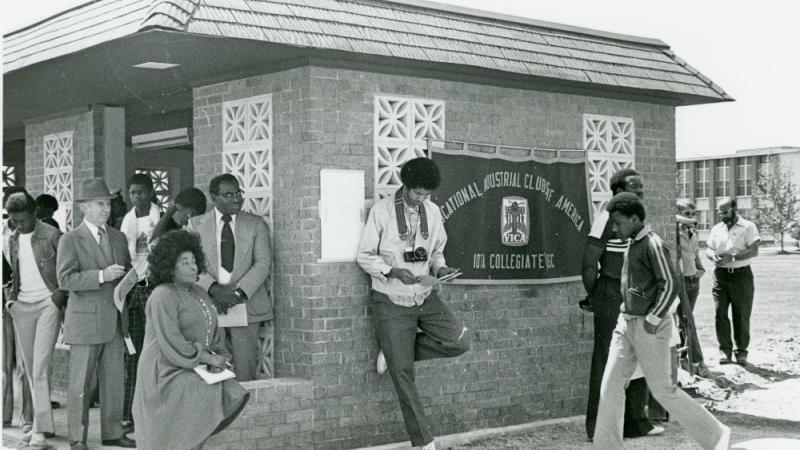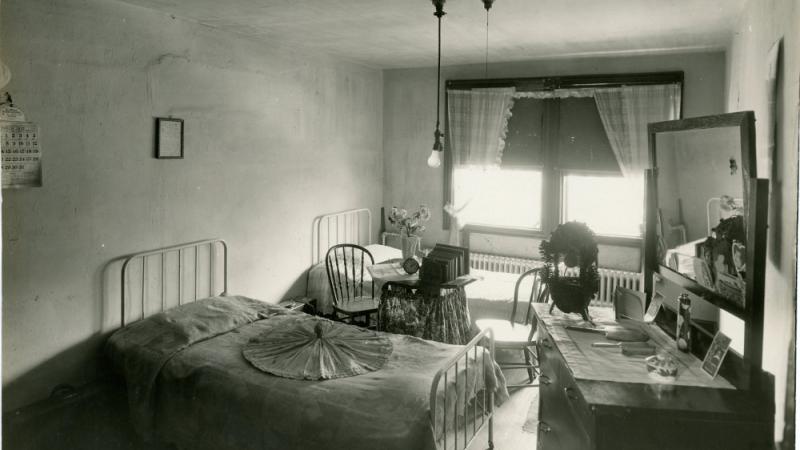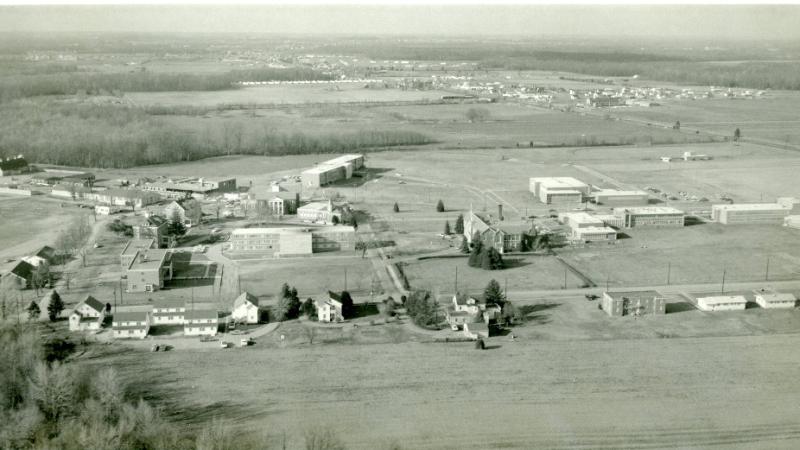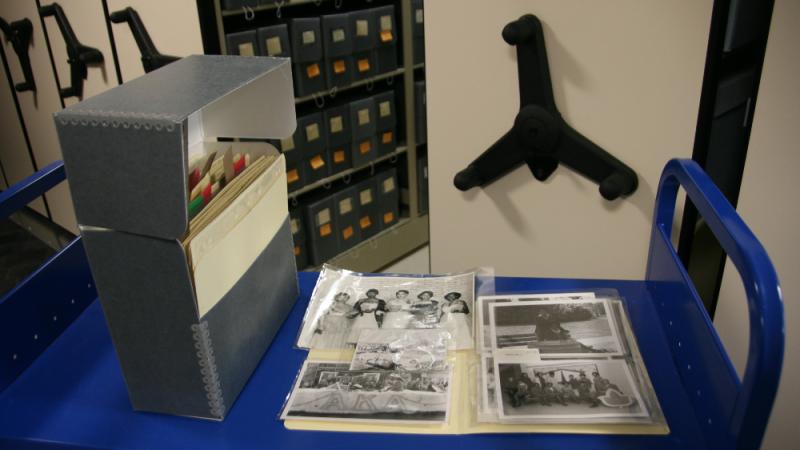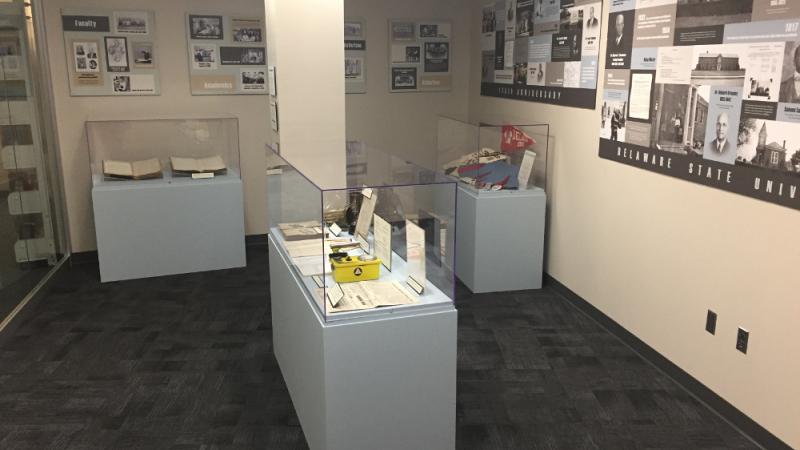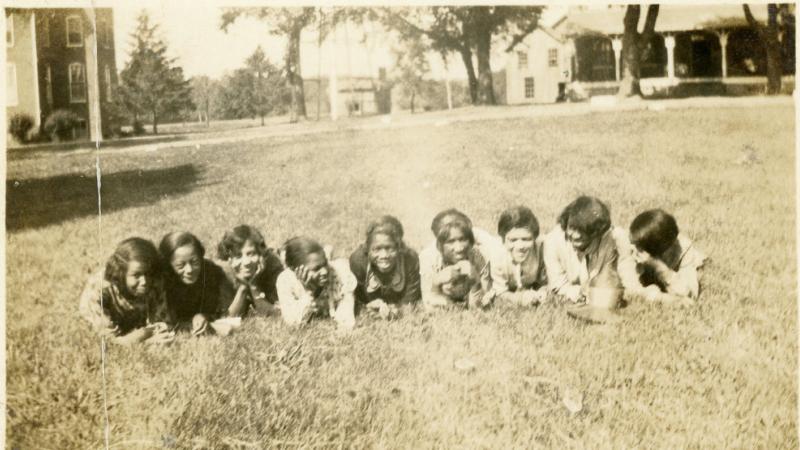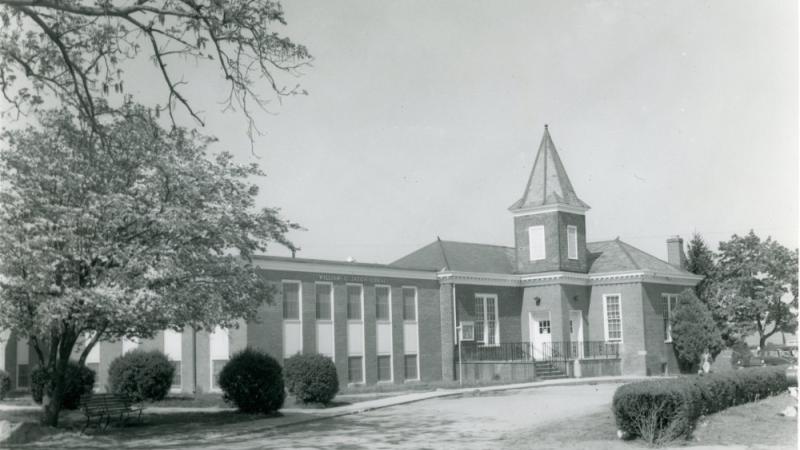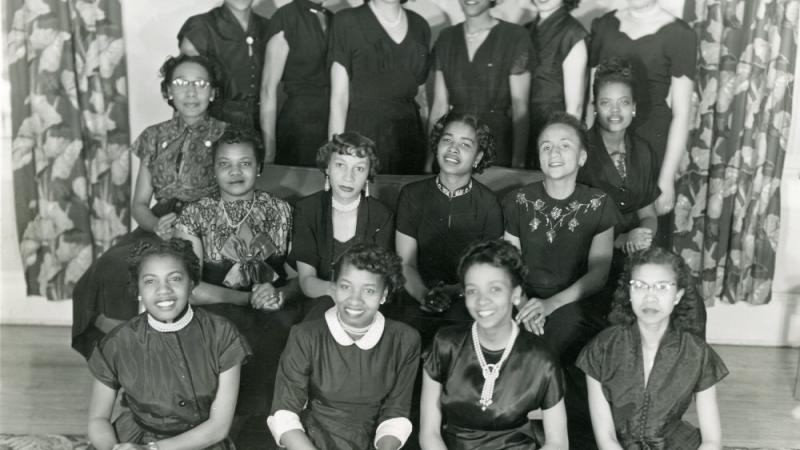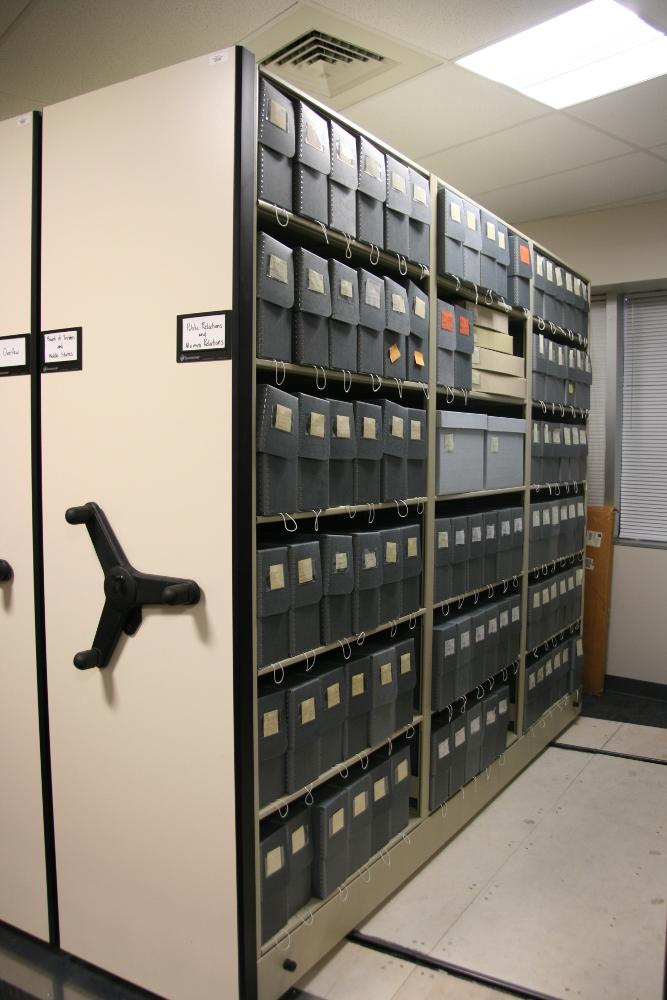50 States of Preservation: Delaware State University in Dover, Delaware
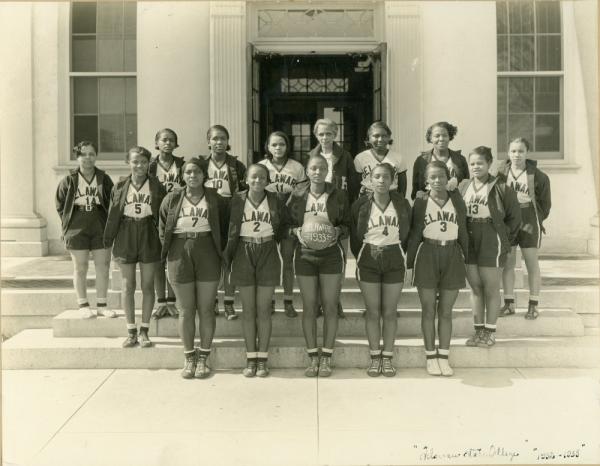
The 1933 women’s basketball team of the State College for Colored Students. This photograph is counted among the very few depicting the SCCS era, let alone early athletics.
Image courtesy of Delaware State University Archives

The 1933 women’s basketball team of the State College for Colored Students. This photograph is counted among the very few depicting the SCCS era, let alone early athletics.
Image courtesy of Delaware State University Archives
This feature is part of a series we call “50 States of Preservation,” in which we are touring small and mid-sized museums, libraries, historical societies, and other repositories across the country to show how they are helping to preserve the nation’s cultural heritage. Read other entries in the series here.
One photograph shows a student reclining in her dorm room, writing on a typewriter balanced on her pillow. Another pictures fifteen seniors on graduation day, looking nervous and serious in equal measure. Still others portray young men peering at a scale in an “Egg Judging Contest,” the moves at a canteen dance, the poise of a football team, a beaming class of nursing students, physics students working with early computers, elementary school students scrutinizing animals at the college’s farm, and a woman standing proudly in her decorated dorm room with the caption “I’m laughing at you…But this is a very ‘serious matter.’” These are just some of the 20,000 photographs dating from the late 19th century to the present found in Delaware State University’s Archives and Special Collections.
Two years ago, the archives had amassed an already impressive collection of 4,500 images. Then, they received a surprising addition when, in late 2015, the university’s Public Relations department cleaned the President’s storage locker in the administration building and transferred historic materials to the archives—including 15,000 photographs. And with the support of a grant from NEH’s Division of Preservation and Access, Delaware State University is preserving them and making them available to the public for the first time.
The photographs show the university from its founding in Dover, Delaware, as the State College for Colored Students in 1891, during the period of racial segregation, to the present day. Now one of the top ten Historically Black Colleges and Universities, Delaware State went from a dozen students in its first year to over 4,500 at present. The historic photos depict both the campus community, fashions, architecture, and landscapes, and sheds light on larger changes in race relations and the role of HBCUs. And this vast collection of images, previously hidden away in boxes, is now accessible.
“Requests for [the newly discovered] photographs skyrocketed!” says Delaware State University Archivist and Special Collections Librarian Rejoice Scherry. “Alumni and external researchers requested photographs for documentary films, fundraising campaigns, and personal enjoyment.” An alumna was delighted to find candid photos of herself in the business club and a homecoming court for a slideshow at her 60th birthday party. The university is currently digitizing images for inclusion on the Delaware Heritage Collection site. And campus partners are now planning a coffee table book of the photos in commemoration of the school’s 125th anniversary. “If the NEH grant hadn’t been bestowed at the precise moment it was,” says Scherry, “the publication project would not have been possible.”
An NEH Preservation Assistance Grant funded a visit in 2015 by paper and photograph conservator Jessica Keister from the Conservation Center for Art & Historic Artifacts, and the purchase of archival supplies and housing. Keister provided guidance to the archives’ staff on the proper storage and rehousing of the photographs. Her recommendations included processing the collection, and that’s exactly what the archives proceeded to do. Staff worked to organize the photographs, describing the people, events, buildings, and subjects in them as well as their creators and dates. They produced in-depth finding aids. Now, the formerly haphazard collection is at users’ fingertips.
“Until processing efforts were well underway, we were unaware of the treasures in our possession,” confirms Scherry. “Suddenly, we were able to formulate and communicate a new understanding of our historic campus through aerial photographs, representations of buildings no longer in existence and candid messages of student life, academics, and fashion.”
In every state, NEH supports organizations that preserve humanities collections. Preservation Assistance Grants for Smaller Institutions (PAGs) fund projects that help safeguard photographs, letters, documents, prints, moving images, sound recordings, maps, drawings, artworks, textiles, furniture, and artifacts, making them available for future generations. These collections help researchers, educators, and members of the public better understand the complex stories of the various cities, towns, and tribal groups that make up our nation.
Since 2000, NEH has made nearly 2,000 Preservation Assistance Grants to small and mid-sized organizations to preserve and care for their humanities collections. In all 50 states, the District of Columbia, and Puerto Rico and the Virgin Islands, PAG awards have funded preservation assessments, purchase of shelving, environmental monitoring equipment, and preservation supplies, and training for staff. Organizations in all states and U.S. territories are eligible to apply, and the program encourages applications from those new to NEH. The next application deadline Preservation Assistance Grants for Smaller Institutions is May 2, 2017. If you have any questions about this grant program, please contact us at @email or 202-606-8570.
